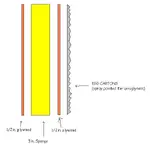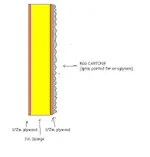F
free_d20
New member
well at the moment im building a second studio used only for personal use. im actually not gonna build anything since it is already built, its around 5'*8' with a sloped ceiling going from 2' to 3' high. well the point is since this is for personal use i dont plan to spend lots of money in insulation so i was wondering if this would help keep most of the noise inside the room:
p.s. the room is in the 3rd floor (in case it matters)
p.s. the room is in the 3rd floor (in case it matters)



